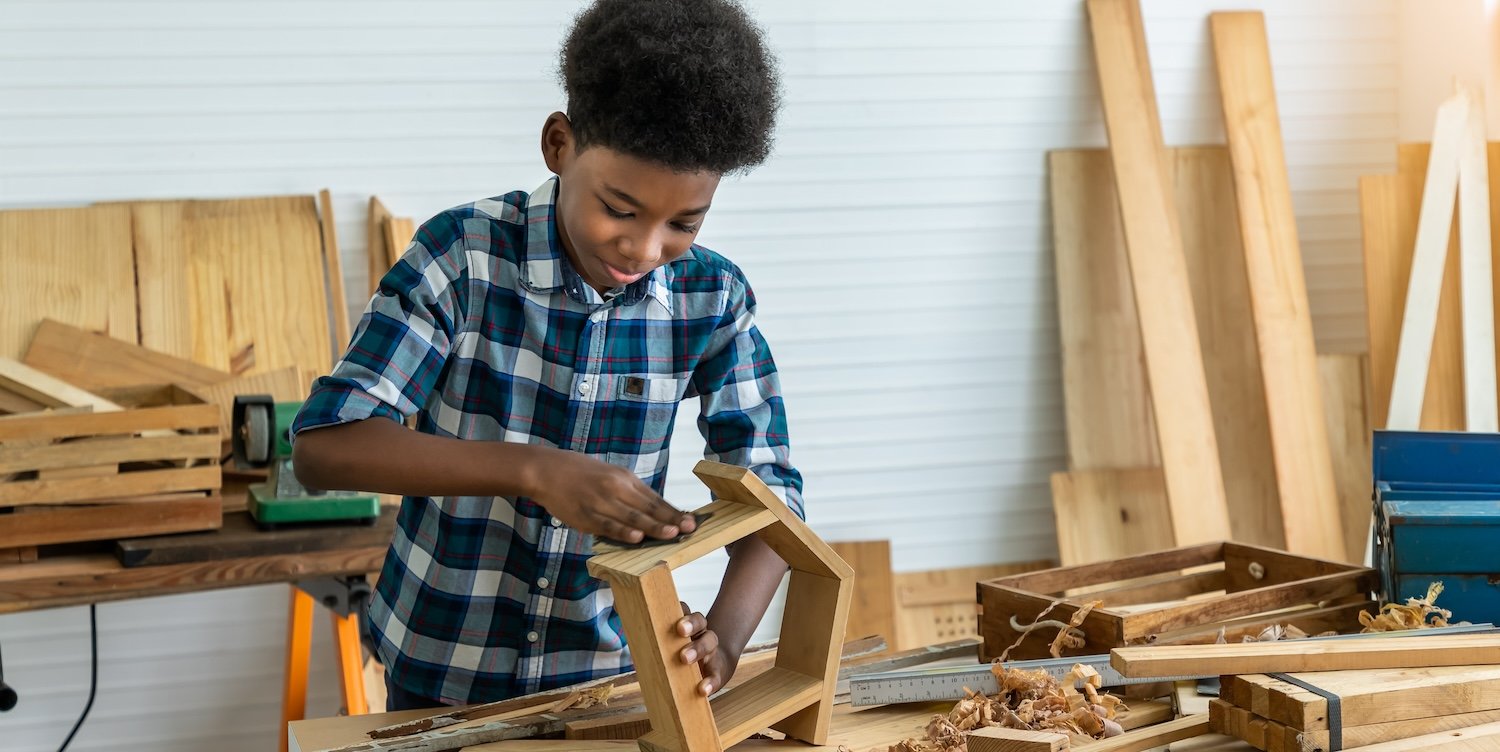Approaching Language Learning for Boys

"Do you know what a foreign accent is? It's a sign of bravery."
-Amy Chua
Estimates by the Journal of Neurolinguistics show that 40% of the world’s population are monolingual, 43% are bilingual, and another 17% are multilingual (fluent in more than two languages). Many in the world speak more than one language. However, when the American Council of Foreign Language Teachers (ACTFL) published the National K-12 Foreign Language Enrollment Survey Report (American Councils, 2017), it was found that only 19.66% of American high school students are enrolled in the study of a world language. Wisconsin has the highest percentage of high school students enrolled in a foreign language at 36%, New Mexico is at the lowest percentage with 8.5%, and Ohio is at 18%. Given those numbers, one can understand why many undergraduate institutions in the United States are prioritizing language study as a distinguishing factor in their admissions process. Many undergraduate institutions ask for two years of study of the same language. More competitive colleges and universities ask for three years.
There are many factors, to be sure, why high school language enrollment rates in the United States may be low. Learning language challenges a range of student habits, skills, attitudes, and capacities. But perhaps even more central to its challenge is that it necessarily involves others. And in the classroom, students must engage others publicly in novel ways and in front of an audience of peers. It is an endeavor that tests a balance of a student’s soft and hard skills. It tests attention, recall, and precision. And it also challenges students’ empathy, their courage, their imaginative and creative capacities. The work tasks not only the mind and the body, but it also tests one’s sense of self, one’s sense of how to relate to others, one’s relationships, and, in the end, one’s sense of the world. And when a language learner is also navigating the trials of adolescence, the labyrinth presented by learning a second language is complicated even further.
The Work of the Communicative Classroom
There is, of course, the work to understand another language’s structure – its symbols, its alphabet, its vocabulary, its grammar, its syntax, and its idioms. Intertwined and yet complicating that work to understand, is the work to apply that language with others in one’s own communication. Either working to understand or working to apply can confuse and confound, and yet each process is dependent on the other in a language learner’s journey.
Many adolescent boys are positioned towards and ready for action. They are often task oriented, working to complete rather than to comprehend. With this in mind, rather than starting with the difficult work of discerning a structure as different and complex as a foreign language with the hope that one will thereby be able to use it, many boys (especially boys together) demonstrate a tendency to work the other way around. Activating, applying, and functioning through a second language together is often their way to discover, understand, and make meaning together.
Such is the premise of the communicative language classroom (Larsen-Freeman, Diane & Anderson, Marti, 2011) where functioning in the second language, applying and relating through it regularly, is the precursor and pathway to understanding. In this setting, language learning becomes an exertion and exploration of voice, listening, and relationship. Communication, however imperfect, is an everyday practice. Like a sport, it is a regular “workout” that inches closer and closer each day to a broader proficiency and a deeper sense of one’s own communicative ability.
Yes, this approach lays bare that uniquely challenging aspect to language learning – its public process. More trying still is that adolescent boys may sometimes have trouble differentiating between a positive and negative relational gesture. Whether they intend to or not, adolescent boys may sometimes posture, provoke, or mimic without fully understanding the impact they have on others. Motivated by competition, many boys may also compare and contend with each other in ways that close rather than extend conversations.
And yet these are all relational rather than linguistic gestures. Helping boys to inquire with sincerity, listen intently, and share openly and honestly with each other serve as the foundation of learning any language concept. A successful language teacher of boys is one who works to structure and monitor cooperative cohort interactions, however imprecise those interactions may be. They know how and with what frequency to instruct, to intervene, to redirect, or to introduce new linguistic concepts so as to sustain an ongoing conversation.
Relating with Kindness When Words are not Available
Language educators must be, to echo and extend the work of Reichert and Hawley, relational teachers for relational learners in a relational discipline. Yes, language learning is risky for many adolescents. It involves error, misunderstanding, vulnerability, and temptation for negative relational gestures. Students must assume a voice that may differ in pitch, tone, even volume than the one they use more regularly. They must communicate in behavior when vocabulary does not yet exist. And, perhaps even harder for an energetic group of boys, they must also listen attentively and without judgment in service of a cause greater than themselves.
Rather than listen to defeat or debate, listening should be incentivized and overtly repurposed to extend conversation. Rather than transact information, student discourse should negotiate and co-create meaning, both functional meaning (information) and relational meaning (trust). A successful language teacher of boys is then a relationship manager with and between boys so that they may associate their effort and vulnerability with trust, purpose, and partnership. In other words, the language classroom should help boys access that part of themselves that strives to be more present for and support his peers. A language teachers’ work necessarily involves the aim of empowering students to act with and for each other.
In the classroom, and the school community, providing frequent, regular, and varied opportunities to practice acts of performing positive relational gestures offers pathways towards discovery and understanding not just of class material, but of self and of others. Frequent, regular intervals during which students act and relate positively recasts knowing and comprehending as fruits of activity and relationship. And then through those relationships, now tuned to a different wavelength, students may find a pathway to sense themselves as functional users of another language.
Parents too can participate and encourage their sons’ language learning journey. Again, language learning can be experienced as a practice, or a “workout”. Here are some best practices for your son to learn at home:
1. Use all modes of learning.
One of the best ways to enhance memory is to involve your brain maximally by using all of your modes of learning: hearing, seeing, speaking, and moving. And, when you are ready, practice concepts with trusted partners.
2. Study aloud.
Saying words aloud gives you a sensory memory link. By feeling the words in your mouth, you begin the process of becoming more comfortable with using them in conversation.
3. Listen regularly to recordings of vocabulary and dialogs.
You may listen to pre-made recordings, but we also recommend you record yourself. Both focused and background listening of recordings may help you. You may listen to recordings as part of your daily routine, while you get dressed, while you are in the car, while you exercise, etc.
4. Handwrite words and phrases on paper.
The body encodes memory, and how you move your body while you write any word helps you to connect your own physicality, your visual understanding of the word, and its written representation. Consider also writing the words largely in the air. This seems silly, but this may also help your body to remember the word.
5. Draw words or phrases on paper.
Beyond providing another sensory memory link, drawing will also help you to sense your own creativity as a second language user and help you to form a more personal connection to the language you are studying.
6. Act out words or phrases.
Again, the body encodes memory, and if you move your body in ways that connect a word with its meaning, you will remember it more easily. Acting out words or phrases also helps you to sense your own creativity as a second language user. You may act out words or phrases as part of your daily routine, while you get dressed, while you are in the car, while you exercise, etc.
7. Review everything aloud.
Summarize each new language concept in your own notebook. Then explain your grammar summary to yourself aloud.
8. Quiz each other.
Once you have completed steps 1 – 7, study with a trusted partner. You can quiz each other on the vocabulary, explain the grammar to each other, share your drawn and acted interpretations of the language, and practice dialogs and skits.
9. Reflect on your work.
Keep a journal. How was learning a certain concept or a certain class challenging for you? How was it easy? What felt fun? What felt strange? Did you recall anything you’ve done prior? How do you imagine using the language concept in class or elsewhere? Discuss your reflection with a trusted partner.
Together, we can support our boys in this academic pursuit while rewarding them with a broader worldview and an appreciation of others.
Subscribe to the Boys Education Series on iTunes!
Citations:
Ansaldo, A. I., Marcotte, K., Scherer, L., & Raboyeau, G. (2008). Language therapy and bilingual aphasia: Clinical Implications of psycholinguistic and neuroimaging research. Journal of Neurolinguistics, 21, 539-557.
De Bot, K. (1992). A bilingual production model: Levelt’s ‘speaking’ model adapted. Applied Linguistics, 13 (1), 1-24
American Councils. "The National K-12 Foreign Language Enrollment Survey Report." American Councils, Jun 2017, https://www.americancouncils.org/sites/default/files/FLE-report-June17.pdf.
Larsen-Freeman, Diane & Anderson, Marti (2011). Techniques & Principles in Language Teaching. Oxford, England: Oxford University Press
Reichert, Michael C., and Richard A. Hawley. I Can Learn From You: Boys as Relational Learners. 2014, eric.ed.gov/?id=ED568788.
Lightbown, P. M. (1985). Great Expectations: Second-Language Acquisition Research and Classroom Teaching. Applied Linguistics, 6(2), 173–189. doi: 10.1093/applin/6.2.173
Gass, S. M., Behney, J., & Plonsky, L. (2013). Second language acquisition: an introductory course. New York: Routledge.
U.S. Department of State. "Foreign Language Training." U.S. Department of State, https://www.state.gov/foreign-language-training/.
Gardner, R. C., & Lambert, W. E. (1959). Motivational variables in second-language acquisition. Canadian Journal of Psychology/Revue canadienne de psychologie, 13(4), 266-272. doi:10.1037/h0083787
Gardner, R. C., & Lambert, W. E. (1972). Attitudes and motivation in second language learning. Rowley, MA: Newbury House
Csizer, K., Dörnyei, Z. (2002). Some Dynamics of Language Attitudes and Motivation: Results of a Longitudinal Nationwide Survey. Applied Lingusitics, 23. 421 - 462.
Csizer, K., Dörnyei, Z. (2005). The Internal Structure of Language Learning Motivation and its Relationship with Choice and Learning Effort. The Modern language Journal 89 (1), 19 - 36. doi:10.1111/j.0026-7902.2005.00263.x
Dörnyei, Z., (2002). The Motivational Basis for Language Learning Tasks. In: Robinson, P. (Ed.), Individual Differences in Second Language Acquisition. (137 - 158). Amsterdam: John Benjamins
Dörnyei, Z. (2005). The Psychology of the Language Learner. Mahwah, New Jersey: Lawrence Erlbaum Associates.
Oyserman, D. (2009). Identity-based motivation: Implications for action-readiness, procedural-readiness, and consumer behavior. Journal of Consumer Psychology, 19(3), 250-260. doi:10.1016/j.jcps.2009.05.008
[11:15 AM] Pesicka, Rob Krystopher Perry is the Director of the Upper School and Hunting Valley Campus at University School. Prior to that, Mr. Perry served as Dean of Faculty and Language Department Chair for five years. He came to University School to teach Spanish in 2012, previously having taught at New York's Instituto Artístico de Teatro Internacional, New Jersey's Hola Bilingual Charter School, and Connecticut's The Frederick Gunn School. He holds a Bachelor of Arts with a double major in English and Spanish from Amherst College, a Master of Fine Arts from Rutgers University, and a Master of Arts in Foreign Language Teaching from Michigan State University.


%202.jpeg)
